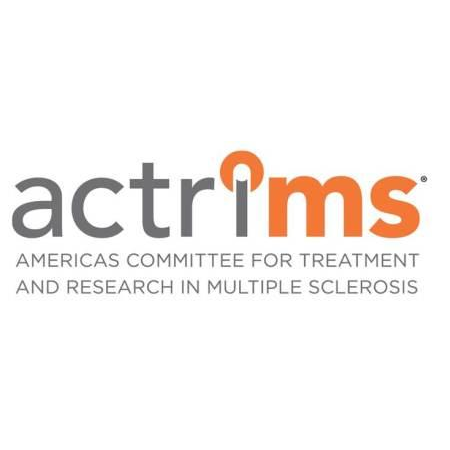
Satralizumab Shows Long-term Efficacy and Safety in AQP4-IgG-Seropositive NMOSD

Results from the open-label SAkuraMoon study show consistent relapse freedom in satralizumab-treated patients with aquaporin-4-IgG-seropositive NMOSD.
Findings from the roll-over, open-label SAkuraMoon study (NCT04660539) showed a high proportion of adult patients with aquaporin-4 immunoglobulin seropositive (AQP4-IgG+) NMOSD who remained free of relapse with a consistently low annualized relapse rate (ARR) over 4.6 years of satralizumab (Enspryng; Genentech) exposure.1 The agent, a humanized monoclonal antibody medication, was
Satralizumab-treated patients had an overall ARR of 0.09 (95% CI, 0.06-0.12). Notably, the ARR did not increase with additional years of treatment (year 1, 0.16 [95% CI, 0.09-0.27]; year 2, 0.10 [95% CI, 0.05-0.20]; year 3, 0.05 [95% CI, 0.01-0.15]; year 4, 0.07 [95% CI, 0.02-0.26]). After 4.6 years, 72% (95% CI, 62-80%) of satralizumab-treated patients were free from investigator-determined protocol-defined relapse (iPDR). At the same time, 91% (95% CI, 84-96) of patients were free from severe iPDR, and 85% (95% CI, 75-91%) had no sustained Expanded Disability Status Scale (EDSS) worsening.
These findings were presented as a poster at the annual
Patients who completed the double-blind periods (DBPs) and open-label extensions (OLEs) of SAkuraSky (NCT02028884) and SAkuraStar (NCT02073279) were rolled over into SAkuraMoon. The patients then continued to receive satralizumab at 120 mg every 4 weeks with or without baseline immunosuppressants. Investigators analyzed all adults with AQP4-IgG+ who were at least 18 years old and received at least 1 dose of satralizumab during these studies from first dose to the cut-off on January 31, 2022—defined as the overall satralizumab treatment period.
PDRs in the DBPs were adjudicated by an independent Clinical Endpoint Committee; however, PDRs in the OLEs and SAkuraMoon were determined by the investigator. Efficacy analyses assessed the annualized iPDR rate, time to first iPDR, severe iPDR (defined as an at least 2-point increase in EDSS score), and sustained EDSS worsening (defined as an EDSS increase of at least 2, 1, or 0.5 points for patients with baseline scores of 0, 1-5, or at least 5.5, respectively, confirmed at least 24 weeks post initial worsening). Safety assessments compared the rates of adverse events (AEs) per 100 patient-years (PY) in the overall satralizumab treatment period vs the DBPs.
Overall, the median duration of satralizumab exposure was 5.0 years (range, 0.1-7.9). Rates of AEs and serious AEs in the overall satralizumab treatment period were comparable with the DBPs (AEs, 332.6 per 100 PY [95% CI, 316.7-349.1]; serious AEs: 10.5 per 100 PY [95% CI, 7.8-13.8]). Rates of infections (92.9 per 100 PY; 95% CI, 84.6-101.8) and serious infections (2.4 per 100 PY; 95% CI, 1.3-4.2) in the overall treatment period were comparable with the DBP, with no increases being observed over time. No deaths, anaphylactic reactions related to satralizumab, or injection-related reactions occurred that led to changes in study treatment.
Additional data on satralizumab previously presented at the
Regarding its efficacy, a 2020 analysis of the 2 studies highlighted satralizumab’s impact on reduction of relapse risk, including in those with
REFERENCES
1. Bennett JL, Greenberg B, Weinshenker BG, et al. Long-term Efficacy and Safety of Satralizumab in Adults with AQP4-IgG-seropositive Neuromyelitis Optica Spectrum Disorder (NMOSD): Results from the Roll-over, Open-label Study SAkuraMoon. Presented at ACTRIMS Forum 2023; February 23-25; San Diego, California. Abstract P324.
2. Kleiter I, Traboulsee A, Palace J, et al. Long-term efficacy of satralizumab in aquaporin-4-IgG-seropositive neuromyelitis optica spectrum disorder (NMOSD). Presented at AAN Annual Meeting; April 2-7, 2022; Seattle, WA, and virtual. Abstract 1340.
3. Greenberg BM, de Seze J, Saiz A, et al. Long-term safety of satralizumab in neuromyelitis optica spectrum disorder: results from the open-label extension periods of SAkuraSky and SAkuraStar. Presented at 2021 CMSC Annual Meeting; October 25-28. Poster RTH012
4. Greenberg B, Bennett J, De Seze J, et al. Efficacy of satralizumab in neuromyelitis optica spectrum disorder (NMOSD): results from open-label extension periods of SAkuraSky and SAkuraStar. Presented at MDS Virtual Congress; September 12–16, 2020. Abstract P0711.
Newsletter
Keep your finger on the pulse of neurology—subscribe to NeurologyLive for expert interviews, new data, and breakthrough treatment updates.

























